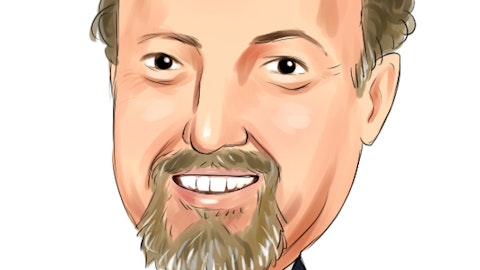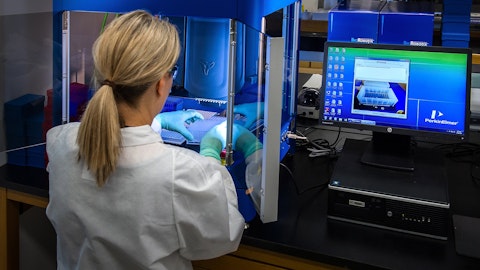Operator: Our next question comes from Mayank Mamtani with B. Riley Securities. Please proceed with your question.
Mayank Mamtani: Good afternoon team. Thanks for taking our questions and congrats on the progress. So just for the monovalent challenge study, kind of your execution and enrollment has gone from what I can tell faster than your original expectations. So could you just comment on the learnings you may have executing on this study and time of the year when you get these infections, and how could you apply some of this to additional, obviously, maybe challenge study work you may have to deal with your bivalent or maybe at some point execute the [indiscernible] norovirus, so would love to hear some commentary around that? And then on the mucosal data that you may look to report incremental to your dose ranging bivalent data that you already presented [indiscernible] data, could you just remind us what you had seen previously with your prior concert so that we are able to kind of bracket some scenarios here for what we may see on IgA?
And when would you look to kind of present that? Is there a medical conference you’re targeting? And then I have a financial question in follow up.
James Cummings: Yes. Thanks, Mayank. So I’ll take the first portion, may have Sean Tucker, CSO, chime in on the mucosal immunity as he is a world expert in mucosal immunity. So in terms of the learnings from the challenge study, recall that the challenge studies typically, they’re much more aggressive than what you’d see in nature in the real world. The sample size for this study is built primarily for descriptive statistical analysis as we’re looking to understand really the mechanics of how this vaccine works. And to do this, we have a number of measures we’re looking at, including a decrease in the severity of acute gastroenteritis causing norovirus, a decrease in viral shedding, what our vaccine’s impact or effect could be on infectivity, and then the effect on disease severity?
So these are all things I think that from a clinical or global health standpoint are very important. Along with that, we’re looking at safety and immunogenicity and the potential for taking a look at what a correlative immunity might be. For those on the call are listening in, norovirus gastroenteritis is traditionally thought to be more seasonal in presentation. So you certainly have more norovirus by and large for seasonal distribution in the winter months. That said, there are outbreaks of norovirus that continue really on any month of the year. One only have to take a look at the CDC website here in the United States where the WHO’s very robust database or the New York Times to take a look at when outbreaks occur, either in nursing homes or in cruise lines, et cetera.
So I think that there is some seasonality to the traditional spread of norovirus, but it is a viral infection that impacts people year round. And because of that, I think we’ll take a look at executing challenges in the future should they be needed, both when the challenge model is available and we think that we have the best opportunity to recruit individuals to move forward in the study. As you mentioned, we’re very fortunate to move this study forward and to be able to deliver the data on time. So we’re very excited about that. For the mucosal immunity question, you asked specifically in terms of I think what we’re looking at in terms of the mucosal immunity for the 202 study. For the 202 study, we don’t yet have that mucosal immunity.
That would be upcoming, right? And for the historical mucosal immunity, I’d asked Dr. Sean Tucker if he’d like to just make a small comment on that, as he ran that program at the time. Sean?
Sean Tucker: Sure. Yes, it’s a good question. So previously, we’ve reported that we get a mucosal response around somewhere between 2 to 10 fold increases if you’re working [indiscernible] or we even talked about nasal responses, and you get a number of subjects that respond up to over 90%, or in terms of ASC count, or in terms of the nasal response, if we look at it really carefully. So our expectation is that the G11 will see a similar mucosal response as well.
Mayank Mamtani: Got it. I appreciate the helpful comprehensive answer there. Just on the financial runway kind of extension that you guided to, to 3Q next year. Could you clarify how much incremental non-diluted funding you’re baking in there, be it from Melinda Gates Foundation or even any other forms of government funding?
Phil Lee: Sure. So I think in terms of our runway guidance, it’s really based on our current plans and our existing grant from the Gates Foundation, right. So we — again, once we see the data from the 201 study [indiscernible] the path forward for the study, then we’ll kind of determine next steps and incremental spend, as needed. But for now, it’s all based on our existing plans and existing grant and no new grants at this time.



